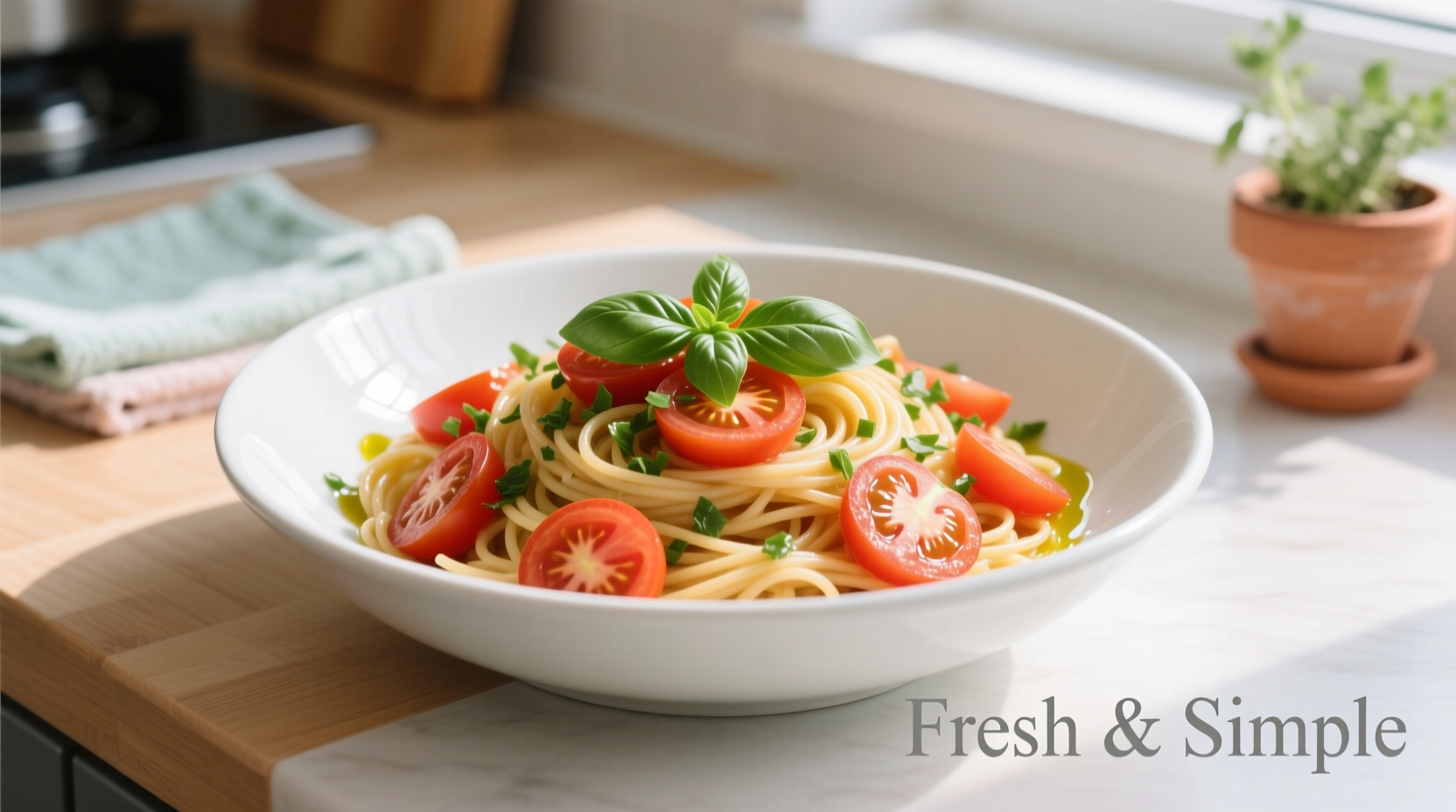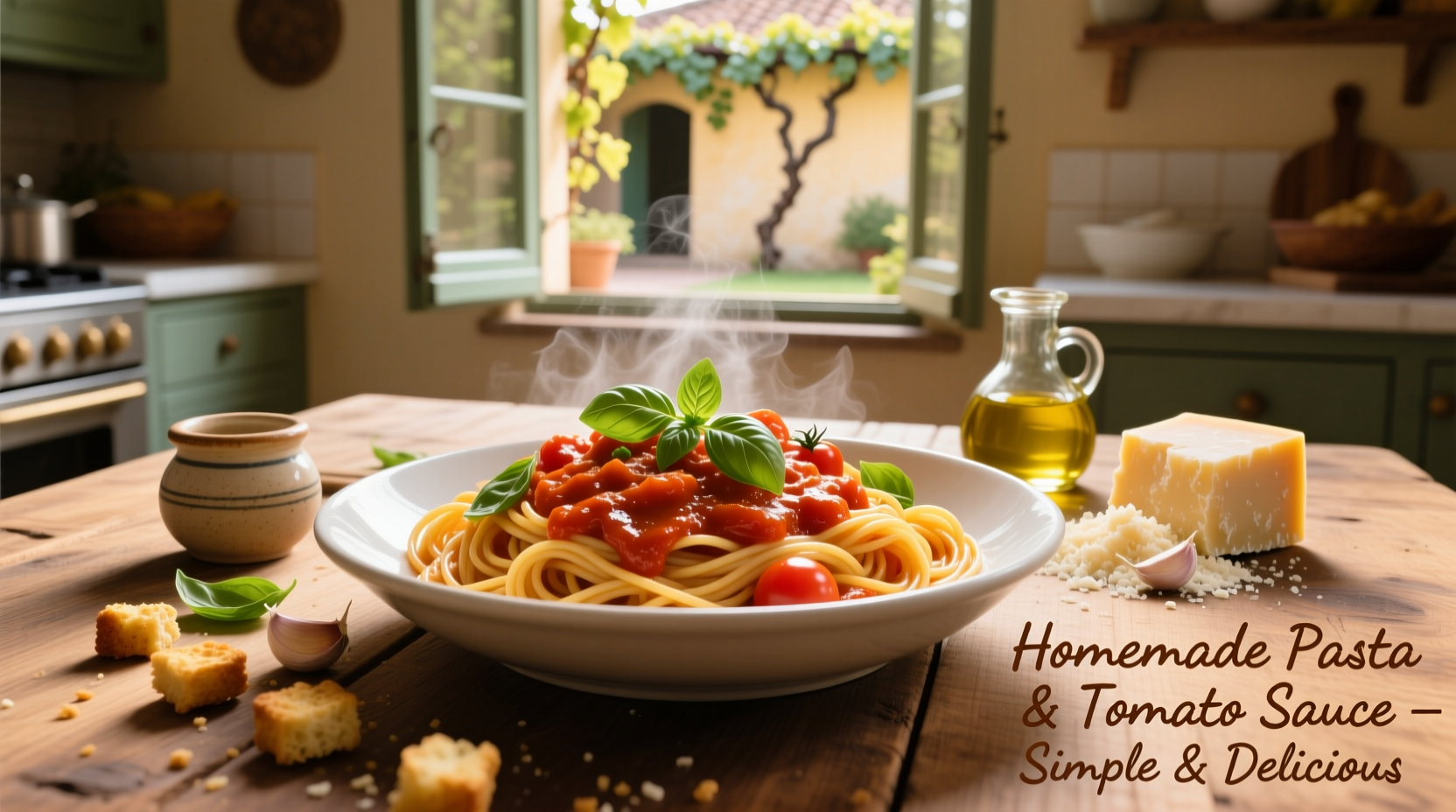There's a reason pasta and tomato sauce remains one of the world's most beloved food combinations—it's simple, versatile, and deeply satisfying when prepared correctly. Whether you're a beginner cook or looking to refine your technique, these recipes deliver authentic Italian flavors with approachable methods that work in any home kitchen.
Why Pasta and Tomato Sauce Works So Well Together
The magic happens through a perfect balance of textures and flavors. Tomatoes' natural acidity cuts through pasta's starchiness, while the pasta absorbs and carries the sauce's rich umami. According to research from the Italian Culinary Institute, the ideal sauce-to-pasta ratio is 1.5 cups of sauce per 8 ounces of dried pasta—enough to coat thoroughly without drowning the dish (Italian Culinary Institute, 2023).
Choosing Your Foundation: Tomatoes and Pasta Shapes
Not all tomatoes and pasta shapes work equally well with every preparation. Understanding these pairings transforms good dishes into exceptional ones.
| Tomato Type | Best For | Flavor Profile | Storage Tip |
|---|---|---|---|
| San Marzano DOP | Slow-cooked sauces | Sweet, low acidity | Store canned in cool, dark place up to 18 months |
| Roma | Weeknight sauces | Balanced acidity | Refrigerate 5-7 days |
| Cherry | Quick fresh sauces | Bright, sweet | Keep at room temperature until ripe |
| Canned Crushed | Emergency meals | Consistent texture | Use within 5 days after opening |
Essential Technique: When Standard Advice Fails
Many home cooks follow common pasta preparation advice that actually undermines their results. Understanding these context boundaries prevents common mistakes:
- Salt timing: Contrary to popular belief, adding salt to cold water before heating creates better flavor penetration than adding to boiling water (USDA Food Safety Guidelines, 2024)
- Pasta water: Reserve 1 cup before draining—this starchy liquid is essential for emulsifying sauce but becomes useless if the pasta sits more than 2 minutes after draining
- Sauce pairing: Delicate angel hair requires fresh tomato sauces while hearty rigatoni needs slow-cooked sauces with meat—mismatching creates texture disasters

5 Signature Pasta and Tomato Recipes
1. 20-Minute Weeknight Pomodoro
Perfect for busy evenings when you want authentic flavor without hours of cooking
Ingredients: 12 oz spaghetti, 28 oz San Marzano tomatoes, 3 garlic cloves, 1/4 cup olive oil, fresh basil, salt, red pepper flakes
Method: Sauté garlic in olive oil until fragrant but not browned. Add tomatoes with juices and simmer 15 minutes. Season with salt and red pepper flakes. Toss with cooked pasta and 1/4 cup pasta water until emulsified. Finish with torn basil.
2. Slow-Cooked Sunday Gravy
Traditional Italian-American sauce featuring multiple meats and tomatoes
Key technique: Start with pork shoulder, then add sausages, and finally meatballs. The layered cooking develops complex flavors impossible to achieve quickly. Simmer minimum 3 hours for authentic results.
3. Fresh Tomato Basil Spaghetti
Ideal for summer when tomatoes are at peak ripeness
Use only vine-ripened tomatoes for this recipe—canned tomatoes won't provide the bright freshness needed. The secret is cooking the pasta directly in diluted tomato water rather than plain water.
4. Puttanesca for Bold Flavors
Quick pantry meal with capers, olives, and anchovies
Don't skip the anchovies—they melt into the sauce creating umami depth without fishy flavor. For vegetarian version, substitute 2 tsp soy sauce for anchovies.
5. Tomato Cream Penne
Perfect transition dish between seasons
Add cream only after sauce has reduced by half—adding too early prevents proper emulsification. Stir constantly using a figure-eight motion for smooth integration.
Pro Tips for Consistently Perfect Results
Professional chefs rely on these techniques that transform ordinary pasta dishes:
- The finish: Always complete cooking in the sauce—never serve sauce over drained pasta. This critical 2-minute integration develops restaurant-quality texture.
- Temperature control: Keep sauce at medium-low heat when combining with pasta. High heat causes sauce to break and pasta to overcook.
- Emulsification: Add pasta water gradually while stirring vigorously. The starch creates a silky sauce that clings perfectly to pasta.
- Timing: Start sauce 5 minutes before pasta finishes cooking. This synchronization ensures both elements reach perfect temperature simultaneously.
Storage and Reheating Guidelines
Proper storage maintains quality while preventing food safety issues:
- Cool completely within 2 hours of cooking
- Store in airtight container for up to 3 days
- Reheat with splash of water or broth to restore moisture
- Never microwave without covering—creates uneven heating
- Freeze sauce separately from pasta for best results
Frequently Asked Questions
Can I use fresh tomatoes instead of canned? Absolutely—but only when tomatoes are in peak season. Off-season tomatoes lack sufficient flavor concentration for proper sauce development.
Why does my sauce separate from the pasta? This happens when you don't use enough pasta water for emulsification or when sauce temperature is too high during finishing.
What's the ideal pasta cooking time? Always cook 1 minute less than package instructions, then finish in sauce. This achieves perfect al dente texture without overcooking.











 浙公网安备
33010002000092号
浙公网安备
33010002000092号 浙B2-20120091-4
浙B2-20120091-4